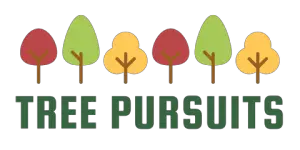A cedar tree seed, also known as a cone, is a small, woody structure that resembles a tiny, brown cylinder with scales. Each scale has two wing-like projections that allow it to disperse in the wind, carrying the seed away from the parent tree. The seeds themselves are usually 1-2 cm long and have a distinctive shape, with a pointed tip and a rounded base. They are an important food source for many animals, including birds and small mammals.
As I stand beneath the majestic canopy of a towering cedar tree, its rustic aroma wafts up to greet me, transporting me back to a time when nature’s secrets were yet to be uncovered.
And yet, despite their grandeur, these ancient trees remain shrouded in mystery – especially when it comes to their humble beginnings.
Have you ever stopped to ponder the tiny seed that holds the promise of new life?
The cedar tree seed, often overlooked and underappreciated, is a marvel of nature’s design.
In this post, I’ll peel back the layers to reveal the truth about these tiny wonders – from their physical characteristics to the unique features that set them apart.
Join me on a journey to uncover the secrets of the cedar tree seed, and discover why these tiny bundles of potential are truly awe-inspiring.
Table of Contents
Anatomy of a Cedar Tree Seed
As I sit here, surrounded by the majestic grandeur of a towering cedar tree, my mind wanders to its humble beginnings – the tiny seed that will one day grow into a behemoth of the forest.
So, what does this little miracle look like?
Let’s dive in and uncover the truth!
Shape: A Perfect Blend
The shape of a cedar tree seed is nothing short of remarkable.
Most commonly, they’re elliptical or spherical in shape, with some species exhibiting a more pointed tip.
Imagine a tiny egg, smooth to the touch, with no visible ridges or bumps.
This sleek design allows the seed to effortlessly roll and disperse in the wind, spreading its parent tree’s genetic material far and wide.
Size: Tiny But Mighty
The average length of a cedar tree seed is around 1/4 inch (6-8 mm), with widths ranging from 1/16 inch (1.5 mm) to 1/8 inch (3 mm).
Thickness can vary, but most seeds are relatively thin, about 1/32 inch (0.7 mm).
To put it into perspective, a standard paper clip is roughly the same width as a cedar seed.
Color: A Masterclass in Camouflage
Cedar tree seeds are naturally brown or reddish-brown, blending seamlessly into their surroundings.
This remarkable camouflage allows them to lie undetected on forest floors, awaiting the perfect conditions to sprout and begin their journey towards maturity.
Some species may display subtle streaks or markings, adding an extra layer of complexity to their already impressive appearance.
Texture: A Study in Contrasts
The texture of a cedar tree seed is equally fascinating.
Many seeds have a smooth surface, while others are covered in fine hairs or tiny ridges.
This varied texture plays a crucial role in the seed’s ability to interact with its environment – think about it like nature’s own version of Velcro, allowing the seed to grasp and hold onto surfaces as it disperses.
As I gaze upon these tiny wonders, I’m struck by the intricate design and functionality that has evolved within the cedar tree seed.
It’s a testament to the incredible diversity and adaptability of life on our planet.
So next time you find yourself amidst the towering splendor of a cedar forest, take a moment to appreciate the humble beginnings of this natural marvel – the tiny but mighty cedar tree seed.
Types of Cedar Tree Seeds
When it comes to cedar tree seeds, you might be surprised at just how diverse they can be.
I mean, who wouldn’t want to learn more about these tiny wonders?
After all, did you know that some species of cedar trees have been around for millions of years?
Eastern Red Cedar (Juniperus virginiana)
Let’s start with the eastern red cedar, a tree that’s as iconic in its native North America as a baseball mitt is to a summer afternoon.
Its seeds are actually what we call “aril” – think of it like a little package wrapped around a single seed.
That aril is what gives the seed its signature fluffy appearance, making it look like a tiny dandelion clock.
Now, here’s something fascinating: eastern red cedar seeds can take up to 18 months to germinate!
Talk about patience.
But don’t worry; I won’t make you wait that long to learn more.
Western Red Cedar (Thuja plicata)
Next up is the western red cedar, a tree that calls the Pacific Northwest home.
Its seeds are much smaller than those of the eastern red cedar and lack the aril – think of them as the plain Jane cousins.
Still, they’re just as important for the survival of this magnificent tree.
Fun fact: Western red cedars can live up to 1,000 years or more!
That’s a long time to be waiting for those seeds to sprout…
I mean, if you’re a seed, that is.
Atlas Cedar (Cedrus atlantica)
Now we venture into the Mediterranean region and meet the atlas cedar.
Its seeds are actually cones that contain tiny scales with each scale holding multiple seeds!
It’s like finding a present wrapped in another present – exciting!
Did you know that atlas cedars can grow up to 60 feet tall?
That’s a lot of presents.
Other Notable Species
Of course, there are many more species of cedar trees and their corresponding seeds.
From the Himalayan cedar (Cedrus deodara) with its distinctive twisted shape to the Cyprus cedar (Cedrus brevifolia) with its cones that resemble tiny pinecones – each has its unique features.
The next time you find yourself surrounded by the majestic scent of cedars, take a moment to appreciate these little wonders.
Who knows?
You might just learn something new about these ancient trees and their incredible seeds!
Unique Features of Cedar Tree Seeds
When it comes to cedar tree seeds, most people think they’re just like any other seed.
But trust me, these tiny wonders have some seriously cool features that set them apart from the rest.
So, let’s dive in and uncover the truth about what makes a cedar tree seed unique.
The Winged Wonder: Wind Dispersal
One of the most fascinating things about cedar tree seeds is their wing-like structures.
Yeah, you read that right – wings!
These feathery appendages help the seeds get dispersed by wind, which is crucial for this species’ survival.
It’s like they’re tiny little airplanes, soaring through the air, spreading out across new territories.
But what makes these “wings” so special?
Well, they’re actually modified scales that have evolved to increase the seed’s aerodynamics.
It’s like the seed is wearing a built-in mini-parachute!
When the wind catches them just right, the seeds can travel significant distances, increasing their chances of germinating in a new location.
The Temperature Tango: Specialized Germination Requirements
Another unique feature of cedar tree seeds is their specialized germination requirements.
These seeds are super picky about the temperature and light conditions they need to grow.
It’s like they’re asking for a specific dance partner – if it’s not just right, they won’t bother germinating at all!
For example, some cedar species require a period of cold stratification (think of it like a seed-level “winter”) followed by a brief warm-up phase before they’ll sprout.
It’s a delicate balance that needs to be met for the seedling to thrive.
The Oil-Rich Defense: A Natural Shield
Finally, let’s talk about the high oil content in cedar tree seeds.
This might seem like a weird feature at first, but trust me, it’s a game-changer.
The oils inside these seeds act as a natural defense mechanism against fungi and insects that might try to feed on them.
Think of it like a seed-level suit of armor!
When the seed is attacked, the oils release a chemical signal that triggers an immune response within the seed.
It’s like they’re saying, “Hey, back off, buddy – I’ve got this!” This unique feature gives cedar tree seeds an edge over other species and helps them survive in their environment.
There you have it – the three main features that make cedar tree seeds stand out from the crowd.
Whether it’s wind dispersal, specialized germination requirements, or natural defense mechanisms, these tiny wonders are truly one-of-a-kind.
Final Thoughts
As I wrap up this journey into the world of cedar tree seeds, I’m left in awe of their intricate design and remarkable features.
From their elliptical shape to their unique wing-like structures, it’s clear that these tiny seeds have evolved to thrive in a wide range of environments.
As I reflect on what I’ve learned, I’m reminded that even the smallest details can hold significant importance – whether it’s the specialized germination requirements or the high oil content that helps protect them from predators.
For me, this exploration has been a humbling experience, highlighting the incredible diversity and complexity of nature.
And as we continue to learn more about these fascinating seeds, I’m excited to see how their unique characteristics can inspire innovative solutions and sustainable practices in our daily lives.

![What Does a Cedar Tree Seed Look Like? [Uncovering the Truth]](https://treepursuits.com/wp-content/uploads/2024/09/What-Does-a-Cedar-Tree-Seed-Look-Like-Uncovering-the-Truth.png)
